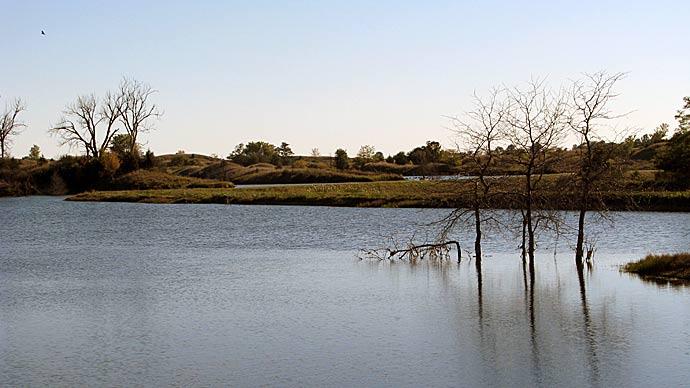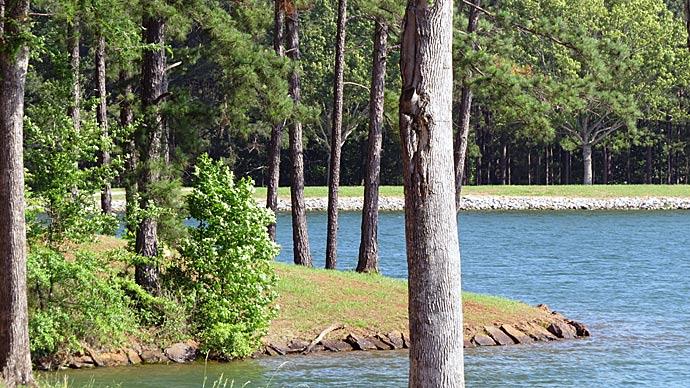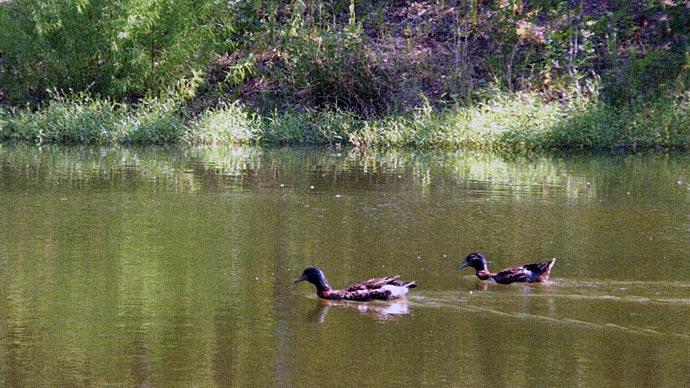The interest in building a new pond or restoring an old one is phenomenal. That was made clear once again last winter when we worked the Pond Boss booth at an outdoor sports show for consumers in the Dallas-Fort Worth area.
All told, about 25,000 consumers strolled the aisles, all with a common interest.
They like to fish and spend time outdoors. We chatted with people from all walks of life -- backhoe operators, salesmen, doctors, lawyers, unemployed dotcom wizards -- and they all seemed to have the same questions. Should I build a pond? What kind of design features should it have? Is it difficult to do on your own? What are the costs? Where do I find information on building or renovating ponds?
Good questions, all. One guy wanted to build a lake, maybe 5 or 6 acres. With a giant but wary smile, he tried to convince me he wanted to build this lake for his wife, because she fishes almost every day. After talking me out of a consultation fee, I agreed to meet at his ranch, only 40 minutes away from home base, to take a look, and see the potential for a lake. There were design problems everywhere.
The site he selected was heavily wooded, surrounded by pastureland. If he builds a lake there, he will lose most of his trees. The creek carried too much water for the proposed dam to hold in a 5-6 acre lake site. And, the land was too flat. The topsoil was sandy, but a local bulldozer man assured us clay was only a few feet underground.
On the next appointment, we used surveying equipment to quantify design issues. On a small tributary that feeds the creek, we determined a dam could be built. From topo maps we saw watershed size to be 40 acres. That is, 40 acres drain into the small branch we were analyzing.
With an average annual rainfall greater than 40 inches, we knew water supplies for this potential pond would be sufficient. Next, we measured the distance the dam would cover, to project how much soil would be moved to create the structure.
Then, we projected a water line, a horizontal plane that would become a lake. With a fistful of flags, we plotted points every 50 feet, to determine the shape and size this lake might be. Then, we dug several test holes to take a look at subsoils. After finishing this investigation, we had a long laundry list of design issues to overcome.
First, the dam was too long. In order to back water into the flat areas, the dam would have to be more than 1,300 feet long, and shaped like a quarter moon. As flat as the ground was, the lake would be shaped like Ronald McDonald's smile, missing a few teeth. Not a pretty sight.
In the lake basin itself, 90 percent of the trees would need to be removed. Forty percent of the lake bottom would be less than 3 feet deep. Too shallow.
Worse, core samples and test holes showed sand and silt as deep as 12 feet. Soil wasn't satisfactory to build a dam.
Our landowner decided not to build the lake. Too many design issues. Probably saved himself thousands of dollars in headaches.
Every site we explore has design issues. Every one. But for every challenge, there's an opportunity. That's why I love my job.
Take Bob McFarland, for example. Bob and his wife Donna live and work in Houston. A relative agreed to donate the couple some acreage, so long as they would build a lake.
Bob contacted the local NRCS (Natural Resources and Conservation Service) agents, who came out, shot the proper elevations and engineered a dam at the best site on the property. The dam would take 2,500 cubic yards of dirt to back up 6 acres of water. That ain't much, folks.
Bids were sought and here's where confusion reigned.
One local contractor bid $3,500 to build the dam. Two others came in with bids in the $30,000 range, while the fourth guy submitted a detailed bid with explanation for his $64,000 retail price. What gives?
The low bid was to build a dam. The high bid was to build the dam, install an overflow pipe, and make the entire lake 8 feet deep, by pushing huge amounts of dirt outside the lake bed, to the shoreline, in big piles.
The problem? The dam design was perfect, soils were perfect, but 70 percent of the lake would be less than 3 feet deep. Shallow water, in a recreational lake or pond, is a management nightmare, aquatic vegetation, for managing fish populations, everything.
The low bidder wanted to build a dam, period. But, this was to be a lake. A lake.
Bob wound up selecting the high bidder, the contractor with the best qualifications and the most thoughtful of the group.
The job would require a giant bulldozer and a scraper. The winning bidder had the appropriate equipment to do the job. The other guys didn't.
After a series of meetings, plans were drawn so the lake builder could learn what Bob wanted. The dam was to be built to NRCS specifications, but the bottom of the lake would be sculpted. A long, narrow island was planned for the middle, and two areas on the east would be molded into peninsulas.
On the west, another spit was to be sculpted, creating deeper areas for fish. Dirt removed from the shallow areas would be smoothed into a gentle grade along shorelines, then covered with topsoil, and planted to native grasses.
When construction began, fish cover and structure was added to the pond perimeter. Fallen trees were, laid perpendicular to the shore. Brush piles were installed off points of peninsulas. Rock piles, stacked cinder block condos, concrete culverts -- all placed in relatively shallow water, with quick access to deep. In the end, 15 percent of the lake bottom was covered to create fish habitat.
Final cost: $34,000. Bob was pleased.
Building a pond or lake is a delicate balance of engineering, biology, business and art. A bulldozer operator is much like a fine artist.
Dirt is his medium, a silver blade is his brush. But, you are the one to guide the artist. The palette belongs to you, the landowner.
Bob, Donna, Pete Dyer and I spent part of 90 days designing, planning, shopping, looking over this project before a spade of dirt was turned. The project took three weeks to build.
Now, the "Little Duck Lake", as Bob and Donna have named it, covers 5 acres and has the first stocking of forage fish. Wood duck boxes are being installed, and the McFarlands have picked a spot for a small weekend cabin.
Every time we talk, I can hear the smiles over the phone.
Veteran fisheries biologist Bob Lusk runs Texoma Hatchery pond consulting service. He may be reached at 903-564-5372. His new book, "Raising Trophy Bass," may be purchased by calling 800-687-6075.
Reprinted with permission from Pond Boss Magazine



